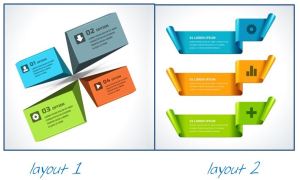I hope you find my writing and business tips and observations useful. My business and blog are dedicated to helping businesses communicate clearly and reach their potential.
Read, subscribe to my newsletter, enjoy!Tash
Using mocks in projects
Getting a designer to prepare a visual mock early in a communications project will cost money of course, but it can often be well worth the expense. I am lucky in working with a designer who quickly grasps my intentions so can produce lovely mocks relatively easily. The mocks then form a basis for developing the main project, which often does not even involve my designer. From recent projects, having a mock prepared early in the process has meant:
- you can put various ideas in one place so details aren’t forgotten or overlooked
- everyone involved can see what is being discussed. Otherwise, everyone assumes they are imagining the same thing but could actually have some very different ideas of what is being developed.
- when giving the brief to a supplier, it is easy to ensure they understand how the final version should look and to specify key details. This obviously doesn’t apply to a design-based project but is very helpful for software or construction projects
- for non-designer suppliers, you can get a much better result if you show them what it is to look like – they can copy the design and save time
- you can be working on the content and other refinements while the underlying structure is being developed. For example, while the technical people are building the software, I can be working on the content of the user screens as I know where text will go (e.g. a heading and two short sections or one long section)
Before you start a new project and rely on written descriptions and your own rough sketches, think about the potential value of having a mock designed for your planning and briefing processes. Are you a visual person? If so, having a mock to work from is probably much easier for you. If you’re not quite so visual, don’t underestimate how powerful a visual can be for many people and how it can aid communication. Can you remember times when a mock made a project flow better than expected?
* Images courtesy of 123RF
Breaking it down
Breaking big issues into smaller pieces makes things manageable because:
- it less daunting to look at small tasks than one huge task (remember the elephant – I can eat one bite but putting an entire elephant in my mouth is overwhelming!)
- you then can earn a series of achievements to feel rewarded and satisfied, and see your progress. Working on one huge task means you have to do a lot of work before you can see results
- finishing small tasks can sometimes be fitted into small time slots such as between meetings or while you’re waiting for someone to arrive
- you may be able to get others to do parts of the job. For example, when I manage a client’s annual report I break it into content and design first so I can outsource the design work before breaking the content aspect into sections. I also get my admin support to arrange the printing and to review the designer drafts for any missed corrections.
- you can set deadlines for small tasks and therefore make sure you are on track for the big project – it is hard to know how close you are to finishing and meeting deadlines if the job is just one big task
- you will feel less stressed and overwhelmed, you will feel more in control and capable. Feeling good is a worthy aim in itself, but it also makes you work more efficiently and effectively so you will probably finish the project sooner, too
What projects have you found easier once you’ve broken them into manageable pieces?


Recent Comments